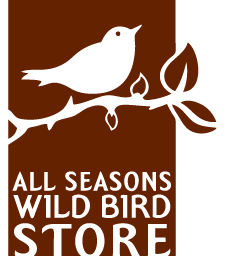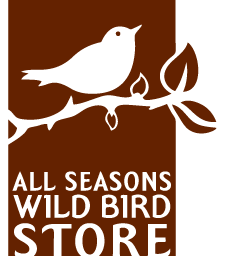Identification The Mourning Dove is in the same family as pigeons and is easily recognized by its small head, plump body and low-pitched, cooing voice. Its plumage is mostly light brown with darker gray wing tips. You can recognize it in flight by its pointed tail with large white spots. A larger bird at the feeder, Mourning Doves are…
Identification While the female Indigo Bunting sure doesn’t live up to the “indigo” in its title, the male in breeding plumage leaves little doubt about how this bird received its colorful name. The brown female (right) is most often on her nest and only upon close inspection in the sun will the bluish glint of her back and wing…
Habits The House Finch has a beautiful song and can often be heard singing. It is a suburban bird and has adjusted well to living among humans. In fact, it’ll often nest in hanging baskets. It will come to nearly any type of feeder as well. Nesting House Finch eggs are small and pale blue and are laid in…
Identification Hairy Woodpeckers are black and white with a white belly. The male has a red spot on the back of his head whereas the female does not. This woodpecker has a mostly black tail with white outer tail feathers. Hairy Woodpeckers do not have spots on these white tail feathers, unlike the Downy Woodpecker. The Hairy has a…
Habitat Although nonnative, European starlings reside in Minnesota year-round. Identification In the fall and winter, starlings are an iridescent purple/black covered with white speckles. As their feather tips wear in the spring and summer, the white speckles disappear, and they take on an all-iridescent purple/black appearance. Their bills also change color: from grayish in the fall, to yellow in the…
Identification This 7″-long bird has bright blue head, back and tail with a rust-colored breast and white under belly. The female is similar, with a slightly grayer blue on the tail and wings. Habitat and Nesting Eastern Bluebirds prefer mixed hardwood forests and grasslands, including meadows, prairies and pastures plus human-made grasslands like cemeteries and golf courses. Bluebirds typically…
Identification At first glance you may shrug off the diminutive Dark-eye Junco as a bland-colored bird. But upon closer inspection you’ll note that the sleek darker top softly fades to a downy white underbelly. And, if you look real closely, you’ll see that juncos have one of the prettiest beaks; a gorgeous shell-pink that contrasts nicely with its dark hood.…
Identification The Downy Woodpecker is our smallest woodpecker. Downys have a black and white spotted appearance with a white belly. The male has a red spot on the back of his head whereas females do not. This woodpecker has a mostly black tail with white outer feathers. These outer white tail feathers will often show black spots on Downy…
Identification The Common Redpoll is a tiny, fluffy finch that is most often only encountered during the winter by backyard birdwatchers. Related to goldfinches, Common Redpolls are similar in size at about five inches long but with a more compact profile and a small conical bill. Their chests and sides are white with brown streaks, they have some light…
Attracting Just like the migrating raptors that prefer to fly down the Minnesota shore of Lake Superior rather than venture above Lake Superior’s water, the little Brown Creeper is very uncomfortable away from the trunks of trees. In fact, I have never seen a Brown Creeper at a bird feeder mounted on a pole or hanging from a branch.…
Identification This gregarious and intelligent backyard bird is most easily recognized for its size (about 11 in), color (a bold blue with white spots on its wings and tail), and unique features such as a black “necklace” and crest. The Blue Jay call is loud and frequent, resembling a harsh slurring of the word jeeah. Behavior Blue Jays appear…
About The Black-capped Chickadee is one of our favorite feeder birds—they’re bold, active little feather balls that aren’t shy about sharing their yard with you. Chickadees are often the first birds to explore a new feeder and show the other birds how it’s done. Their territorial fee-bee call can make you smile, as it is a welcome sound of…
Identification One of the most striking birds to visit backyards is the oriole. The vivid orange and black coloring of a male Baltimore Oriole is unmistakable and dramatic. While both sexes display a white wing bar, the female’s palette is more subdued, with a dull yellow body and grayish-brown wings. Young orioles appear similar to females in color. Juvenile males…
Identification An iconic bird throughout North America, the American Robin is a large songbird known for its bright orange belly. A dark head, white eye circle, gray back and white rump also distinguish this type of thrush. Behavior Early to rise, you’ll likely hear their lilting song as one of the first on summer mornings. American Robins spend much…
Identification Perhaps one of the most beloved songbirds, what backyard birder hasn’t been thrilled by the sight (photographed at right by Carol Papermaster) of dozens of finches hanging on Nyjer® feeders? In the summer, the male goldfinch is a bright yellow with a black forehead and wings with white wing bars. The female lacks the black forehead and has a…

